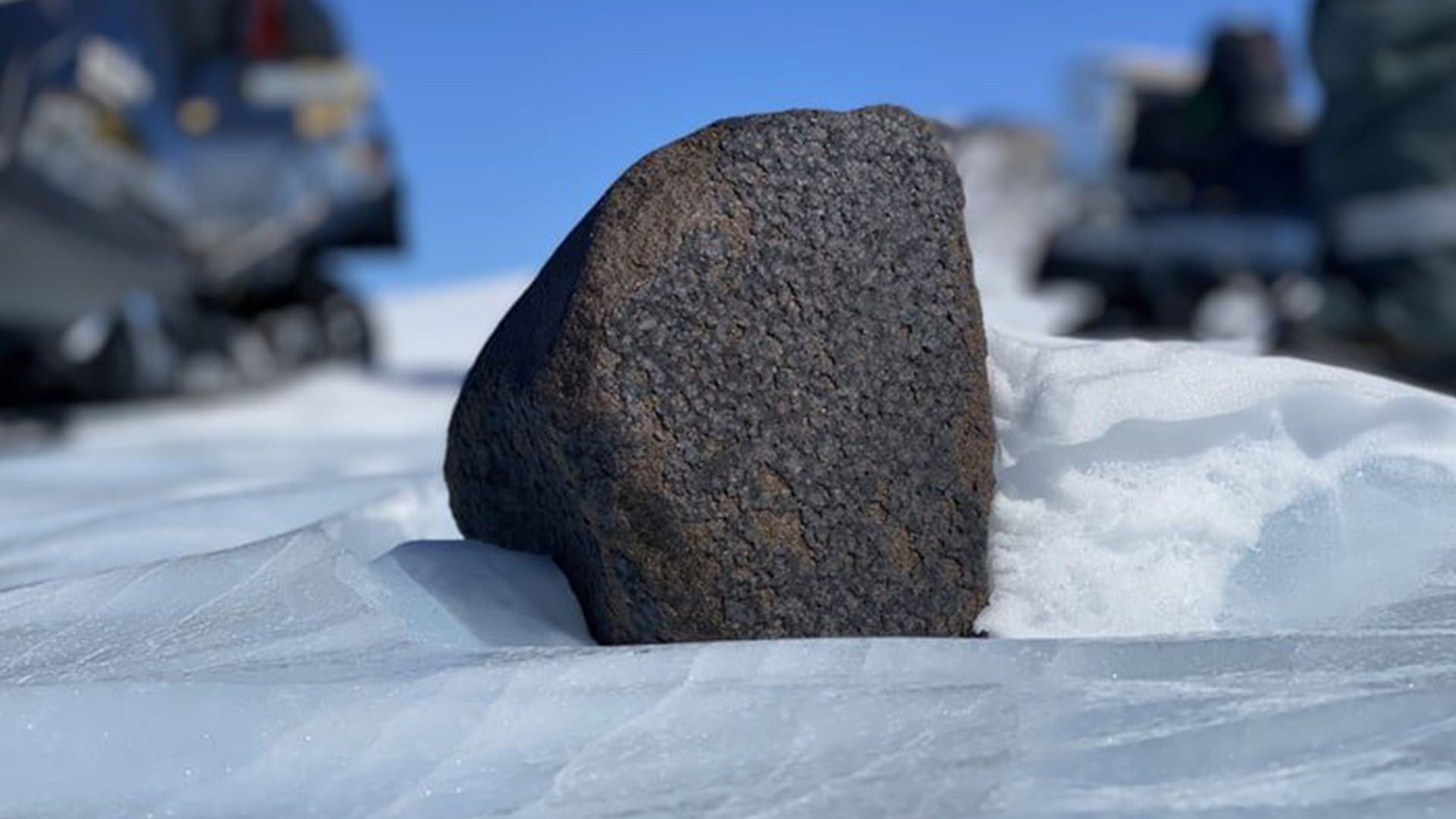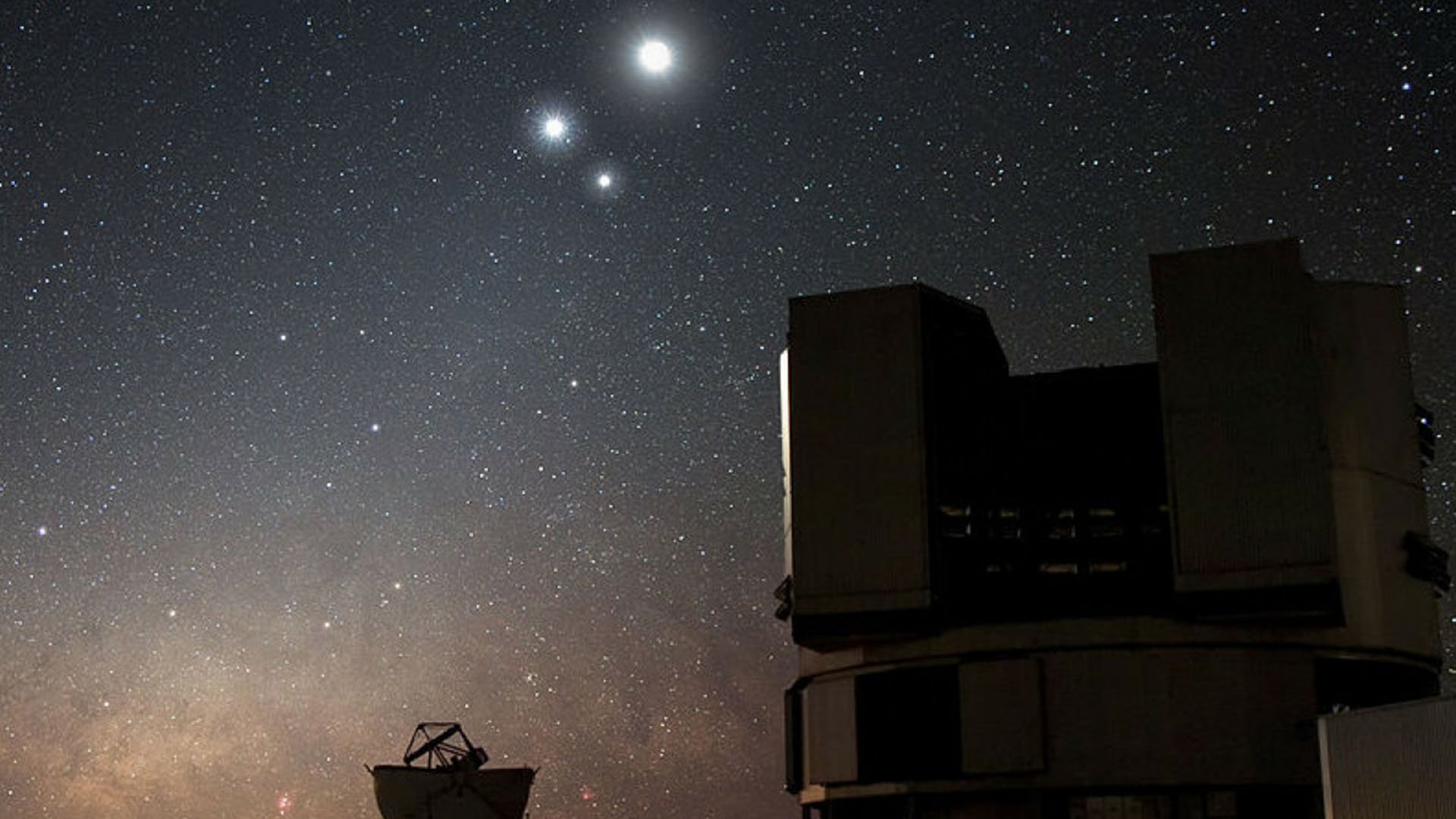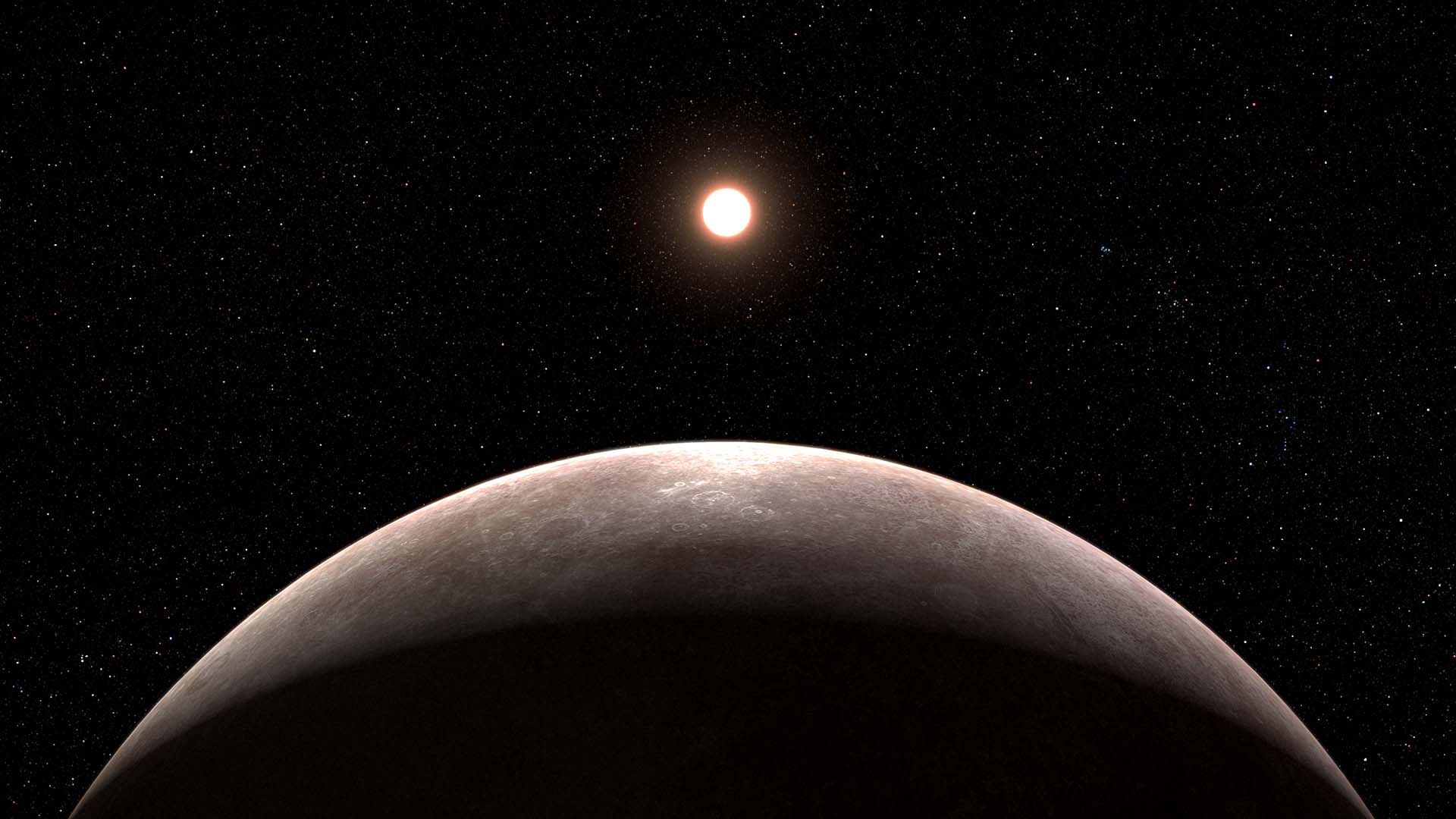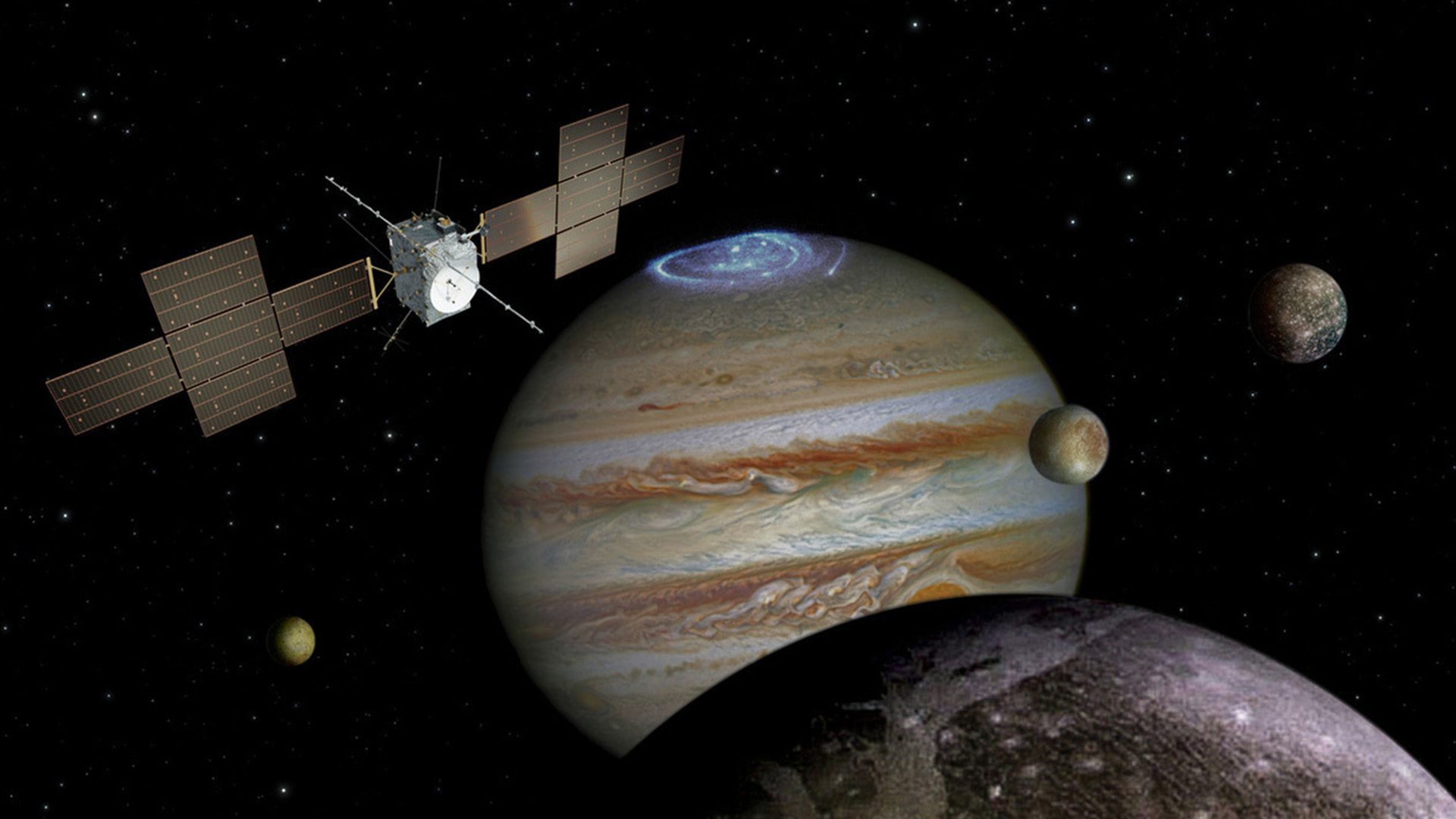A team of scientists has discovered five new meteorites in Antarctica. One of the space rocks found by researchers weighs 16.7 pounds, making it among the heaviest meteorites ever found on the continent.
For a week and a half, researchers rode snowmobiles, slept in tents, and endured the Antarctic summer temperatures of 14 degrees Fahrenheit. Antarctica is a hotspot for meteorite discoveries, with as many as 45,000 space rocks uncovered from the continent. Researchers speculate that as many as 300,000 may still be contained within the ice.
“The object comes from the asteroid belt and probably plopped down into the Antarctic blue ice several tens of thousands of years ago,” Ryoga Maeda, a researcher at the Vrije Universiteit Brussel who co-led the team told the Brussels Times.

In 2022, a group of scientists led by glaciologist Veronica Tollenaar developed a map of potential hotspots for finding meteorites in Antarctica. The researchers developed the map by combining satellite data with the locations of past meteorites, ice flow velocities, and surface temperatures. They then used machine learning to estimate the likelihood of finding more rocks at a given location. The current team is the first to search five of those mapped sites, one of which turned up the recently discovered extraterrestrial rocks.
While space rocks fall evenly across the Earth, dry desert climates are best for preserving space rocks and Antarctica is considered a polar desert because it receives so little precipitation. Additionally, these areas are also prime for spotting space rocks because the dark rocks are very visible amidst the pale snowy landscape. The general lack of terrestrial rocks also assists this because it limits any look-alikes from Earth.
According to a statement, however, this new discovery stands out as only roughly 100 of these meteorites have weighed 16.7 pounds or larger.
“We don’t tend to find too many meteorites in Antarctica that are as big as this,” Ashley King, a researcher at the Natural History Museum in London who was not involved in the discovery, tells New Scientist’s Alex Wilkins. “The more meteorite we have, the more sample that we have available for us to study and learn about the early solar system.”

In addition to being a means of connecting with space, meteorites are a means of connecting with Earth’s past. For example, some space rocks contain bits of solid material formed at the birth of our solar system 4.6 billion years ago. They also provide rare insights into other planets, asteroids, and comets. For example, they can reveal the age of elements that formed planets and the temperatures on and within asteroids.
The meteorites will now thaw under controlled conditions at the Royal Belgian Institute of Natural Sciences. Though the team hasn’t fully analyzed the new findings, the largest rock appears to be an ordinary chondrite (the most common type of space rock) containing metal. Team member Maria Valdes, a research scientist at Chicago’s Field Museum of Natural History, told CNN that she is planning to continue to study the samples, “Then I can start to think about the origin of this rock, how it evolved over time, what kind of parent body it came from and where in the solar system that parent body formed.”







